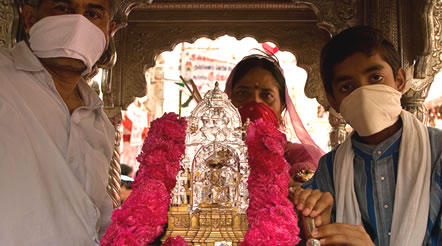
|
| Jain Wedding
Culture & Traditions For Janis, marriage is largely a worldly event. It
is recommended to all Jain Shravakas unless they have taken a "vrata"
of Brahmacharrya. The children born of marriage will follow the
dharma. The ritual of marriage is largely governed by the traditional
practices that may vary for different Jain communities. The Jain community generally marries in their own
communities so that children born out of this marriage also become
Jain. Preferably Jain marriage should be conducted by a Jain Pundit. Brahmins attached to the Jain community conduct marriages at some places. In any case, it should be conducted by some respectable person. The person should have proper knowledge of rites and protocols. Marriage is something of far more significance than a family vacation or a birthday or a graduation. It is once in a lifetime occasion. About the expenses or duration of marriage, however, there should be no waste of money or time. A priest is responsible for fixing a proper date and time for the wedding. A pooja is performed at the girl's house where relatives and friends are invited. In this ceremony heavenly goddesses are invoked by sacred prayers and called upon to take abode in the bride's house. It is done to ensure fertility and happiness of the new couple. After this, the Patrika bearing the time or Muhurat is sent to the boy's house. It is usually accompanied with sweets. Laghana Patrika is read at the groom's house by the priest. The groom wears the traditional Jain headgear and performs the Vinayakyantra pooja. A tilak is applied on the groom's forehead by the bride's brother. It is generally followed by the engagement or 'Sagai'.
The ceremony is held at the groom's house by the priest. Pheras are taken after this. An auspicious moment is decided for the pheras. Bride and groom are taken to the mandap for conducting pheras and seated. Girl is seated on the right side of the groom. Generally, kanyapradhan ceremony is performed at the pheras. One rupee and twenty paisa are kept with rice on the right hand of the bride. Then father of the bride publicly hands the girl to the groom. Seven vows are taken by the couple together. Havan is performed after this. The holy water is poured on the hands of the boy and girl together. The priest enchants the mantras at this occasion to bind the boy and girl in a sacred relationship.
|
